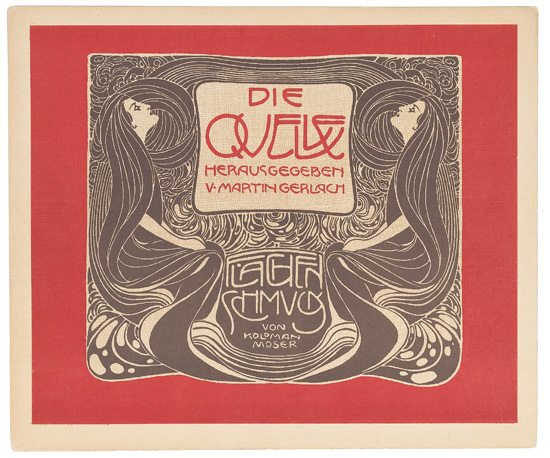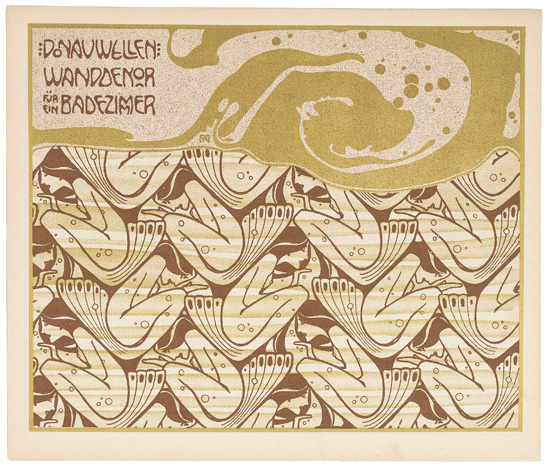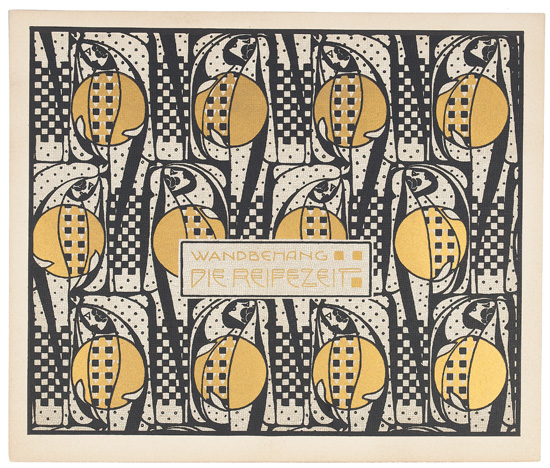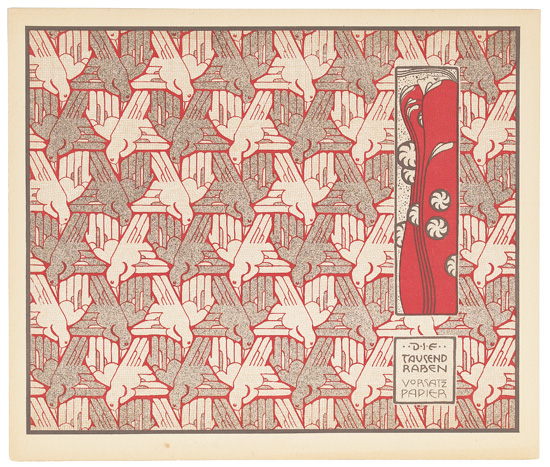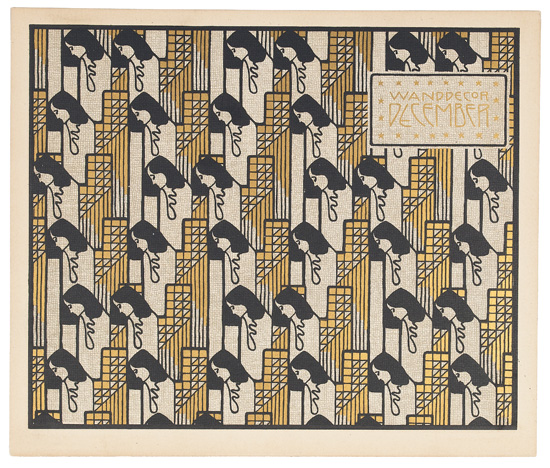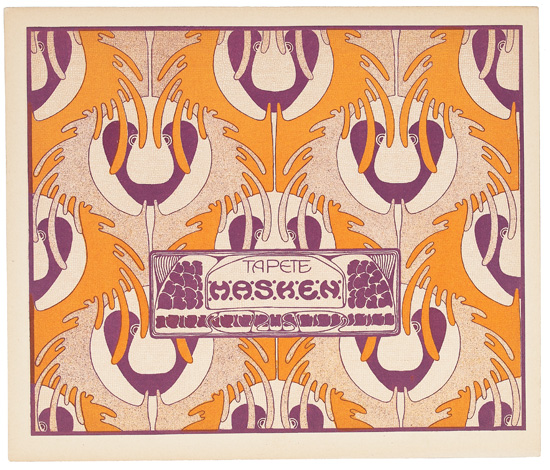Sale 2213 - Lot 5
Price Realized: $ 10,500
Price Realized: $ 12,600
?Final Price Realized includes Buyer’s Premium added to Hammer Price
Estimate: $ 4,000 - $ 6,000
KOLOMAN MOSER (1868-1918) DIE QUELLE / FLÄCHENSCHMUCK. 30 color plates, in original decorated cloth portfolio. 1901.
9 3/4x11 1/2 inches, 25x29 cm. Martin Gerlach, Vienna.
Condition A-: foxing and minor time-staining in margins and image.
The third in the three volume series "Die Quelle" [The Source.] Moser presents sumptuous decorations for flat surfaces, such as tapestries, wallpaper and fabrics. "This variation on the total work of art concept is a splendid collections of pattern designs . . . Reflecting his interest in the graphic theories of Rudolf von Larisch, Moser plays with fore- and background space through the juxtaposition of form, color and pattern. The result is spatial tension that verges on optical illusion. Inspired by Japanese prints, Moser also superimposed square or rectangular insets on the patterns that identify the name of the design and its suggested use" (p. 97, Design, Vienna, 1890s-1930s, by Joann Skrypzak and Barbara Copeland Buenger. Elvehjem Museum of Art, Madison, 2003). Each plate is double sided, with a color design on one side and a black and white design on the other.
9 3/4x11 1/2 inches, 25x29 cm. Martin Gerlach, Vienna.
Condition A-: foxing and minor time-staining in margins and image.
The third in the three volume series "Die Quelle" [The Source.] Moser presents sumptuous decorations for flat surfaces, such as tapestries, wallpaper and fabrics. "This variation on the total work of art concept is a splendid collections of pattern designs . . . Reflecting his interest in the graphic theories of Rudolf von Larisch, Moser plays with fore- and background space through the juxtaposition of form, color and pattern. The result is spatial tension that verges on optical illusion. Inspired by Japanese prints, Moser also superimposed square or rectangular insets on the patterns that identify the name of the design and its suggested use" (p. 97, Design, Vienna, 1890s-1930s, by Joann Skrypzak and Barbara Copeland Buenger. Elvehjem Museum of Art, Madison, 2003). Each plate is double sided, with a color design on one side and a black and white design on the other.
Exhibition Hours
Exhibition Hours
Aliquam vulputate ornare congue. Vestibulum maximus, libero in placerat faucibus, risus nisl molestie massa, ut maximus metus lectus vel lorem.




